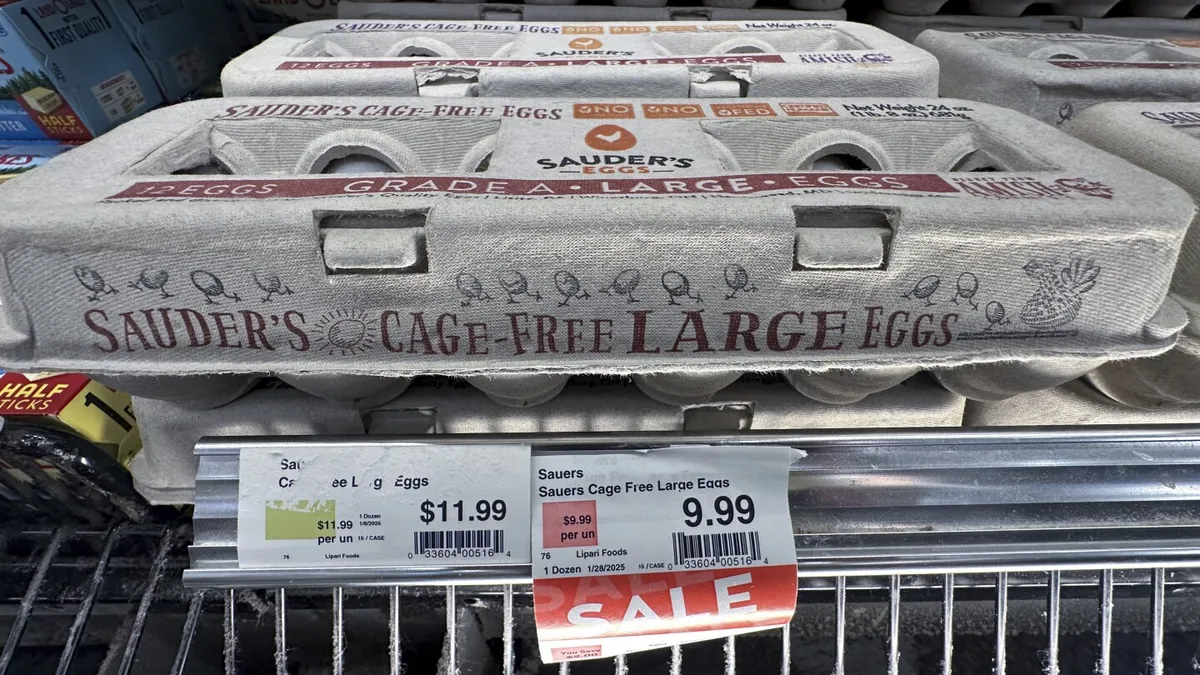
In a troubling turn for consumers, egg producers are attributing the surge in egg prices to the ongoing bird flu outbreak. Critics, however, argue that large corporations are exploiting their market dominance, profiting at the expense of budget-conscious shoppers. Advocacy groups, alongside Democratic lawmakers and a member of the Federal Trade Commission, are calling for a thorough government investigation following the alarming rise in egg prices, which reached an unprecedented average of $4.95 per dozen this month.
The Trump administration recently introduced a plan to combat the bird flu, but the effectiveness of this initiative in alleviating soaring egg prices—a significant contributor to overall inflation—remains uncertain. Senator Elizabeth Warren commented on the situation, stating, “Donald Trump promised to lower food prices on ‘Day One,’ but with egg prices skyrocketing out of control, he fired the workers charged with containing bird flu. Working families need relief now.”
Egg producers and industry experts primarily blame the bird flu outbreak for the current spike in prices. Over 166 million birds have been culled to contain the virus, including around 30 million egg layers since January, severely disrupting the supply chain. The Department of Agriculture has a longstanding policy of eliminating entire flocks whenever the virus is detected on a farm, leading to a nationwide decline in the number of egg layers. As of a February 1 USDA estimate, the egg layer population had decreased by approximately 12% to 292 million, with the situation likely worsening as an additional 11 million layers have been killed since then.
Emily Metz, President of the American Egg Board, emphasized, “This has nothing to do with anything other than bird flu. Our farmers are in the fight of their lives, doing everything they can to keep these birds safe. This is a supply challenge due to bird flu. Nothing else.”
Farm Action, an advocacy group representing smaller farmers and consumers, suspects monopolistic behavior in the egg industry. They point out that while egg production has only decreased by about 4% from last year, consumers are still facing empty shelves in grocery stores. Angela Huffman, President of Farm Action, noted, “Dominant egg corporations are blaming avian flu for the price hikes that we’re seeing. But while the egg supply has fallen only slightly, these companies’ profits have soared.” The Justice Department has acknowledged receiving a request for an investigation into these claims but has not commented further.
Historically, retail egg prices have remained below $2 per dozen for years. However, prices have more than doubled since the bird flu outbreak began, significantly boosting profits for egg producers. Most of the leading producers are privately held and do not disclose their financials. However, Cal-Maine Foods, which supplies about 20% of the nation's eggs, has reported a substantial profit increase. In the last quarter, Cal-Maine's profits reached $219 million, with eggs selling for an average of $2.74 per dozen—up from a mere $1.2 million in the quarter preceding the outbreak when prices were just $1.37 per dozen.
Despite the increase in egg prices, economists and analysts caution that this may not indicate any wrongdoing. Short-term profits could be fleeting as farms face the repercussions of the outbreak. Once a flock is culled, it can take up to a year to clean the farm and raise new egg-laying birds. Although the USDA compensates farmers for each bird killed, this does not cover all costs incurred during the downtime.
CoBank analyst Brian Earnest remarked, “The consumer, I think, will probably feel like they’re getting the rough end of the stick. But I guarantee you, the farmers that are having to depopulate the barns are having a rougher time.” Additionally, rising inflation in feed, fuel, and labor costs, coupled with farmers investing in biosecurity measures, have further inflated production costs. According to the U.S. Bureau of Labor Statistics' producer price index, production costs are currently at an all-time high.
University of Arkansas agricultural economist Jada Thompson concluded, “This isn’t a case where they’re taking the price up to gouge the market. The price is going up through auction at wholesale, and they’re benefiting from higher prices because supplies are tight.”